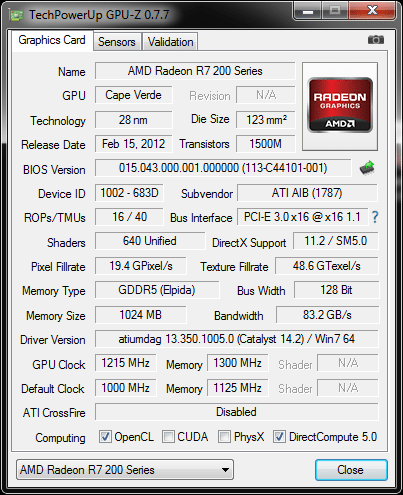Powercolor R7 250X 1GB GDDR5 Review
Ryan Martin / 11 years ago
Overclocking & Overclocked Performance
The overclocking ability of a graphics card is an important buying consideration irrespective of whether the graphics card is low end or enthusiast level. I’m sure everyone will agree that the more extra performance from overclocking – the better. In our overclocking we push each graphics card to its maximum stable core and memory frequencies. Typically we also raise the power limit to the maximum and where possible raise the voltages if this results in higher overclocks being achieved. We always aim for “24/7” stable overclocks that DO NOT result in potential heat on longevity issues so if we do raise the voltage it is still kept within safe parameters. The latest beta version of MSI’s Afterburner software is the overclocking utility of choice: this is because MSI Afterburner Beta versions typically allows you to circumvent overclocking restrictions – particularly those set by AMD.

Our R7 250X sample was a solid overclocker – we were able to bump the core clock up by an impressive 215 MHz which is a 21.5% overclock. The memory also managed to clock to 1300 MHz which is a 175 MHz actual (700 MHz effective) overclock. All in all the overclocked Powercolor R7 250X provided a nice 15% bump in performance making it faster than a stock Nvidia GTX 650 Ti (non-boost) which is a $120-130 video card.





















